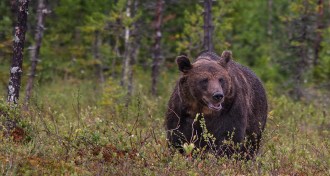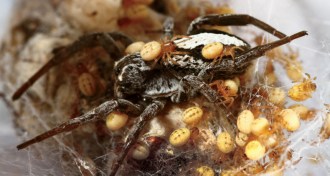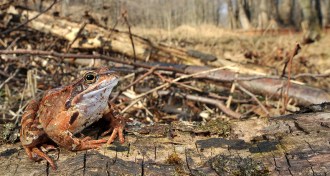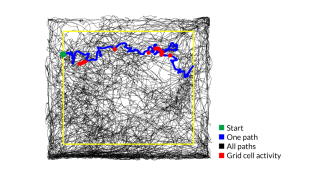Life
Sign up for our newsletter
We summarize the week's scientific breakthroughs every Thursday.
-
 Life
LifeBolder snails grow stronger shells
Bold snails have tougher shells than shy snails. Understanding what drives snails to develop such differences is a bit of a challenge.
-
 Animals
AnimalsFinland’s brown bears on surprise fast track to recover diversity
Brown bears in southern Finland show surprisingly fast improvements in genetic diversity and connections with other bears.
By Susan Milius -
 Animals
AnimalsWhen mom serves herself as dinner
For this spider, extreme motherhood ends with a fatal family feast.
By Susan Milius -
 Animals
AnimalsWhether froglets switch sexes distinguishes ‘sex races’
Rana temporaria froglets start all female in one region of Europe; in another region, new froglets of the same species have gonads of either sex.
By Susan Milius -
 Plants
PlantsBits of bacterial DNA naturally lurk inside sweet potatoes
Samples of cultivated sweet potatoes worldwide carry DNA from Agrobacterium cousin of bacterium used for GMOs.
By Susan Milius -
 Ecosystems
EcosystemsBefore you plant this spring, consider the birds
A study of Chicago neighborhoods finds that the plants in private yards influence the variety of birds that live in the area.
-
 Animals
AnimalsTales of the bedbug, one of the world’s most reviled insects
‘Infested’ captivates with stories about the bloodsucking insects. Resurgent in many areas in the United States, bedbugs are the fastest-growing moneymaker in pest control.
By Sid Perkins -
 Neuroscience
NeuroscienceSky’s brilliant hues may help bodies keep time
The internal clocks of mice are sensitive to changes in the sky’s colors. Humans’ clocks may work similarly, offering a tool to trump jet lag.
-
 Neuroscience
NeuroscienceBeing watched can boost productivity
In the company of another, a monkey steps up production on a simple job.
-
 Animals
AnimalsGazing deeply into your dog’s eyes unleashes chemical attraction
Dogs and people gazing into each other’s eyes give each other a bond-strengthening rush of oxytocin.
By Susan Milius -
 Life
LifeOctopuses move with uncoordinated arms
An octopus crawls unlike any other animal. Mimicking the cephalopod’s control over its movements may lead to more agile robots.
-
 Neuroscience
NeuroscienceWhen brain’s GPS goes awry, barriers can reboot it
Brain’s internal map self-corrects when it hits a (literal) wall.